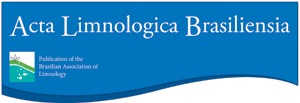Abstracts
Abstract: Aim In this study, we investigated the response of microcrustaceans composition, diversity and abundance (Cladocera and Copepoda) to the lake’s origin (natural and man-made) and trophic state (mesotrophic and eutrophic, with natural eutrophication and artificial eutrophication). We tested the following hypotheses: (I) the increase in the abundance of certain microcrustacean species may indicate a rise in the trophic level; (II) the richness and abundance vary amongst lakes and are higher in the lake with natural eutrophication; and (III) the microcrustaceans abundance is associate with high primary productivity, being higher in the eutrophic environment with artificial eutrophication.
Methods The study was conducted in a segment of the Paranapanema River basin, in southeastern Brazil, focusing on five lakes spanning an eight-kilometer stretch, to understand the different organisms' responses to distinct conditions of aquatic environments. Sampling was carried out bimonthly over the course of a year.
Results A principal component analysis (PCA) separated three types of lakes: eutrophic (natural and man-made) to mesotrophic. Additionally, 25 taxa were found. SIMPER analysis filtered six species with more than 70% dissimilarity contribution. Five species exhibited differences amongst the lakes, one species correlated with natural variables as depth. The redundancy analysis associated the Bosminopsis deitersi abundance with man-made eutrophic lakes and with the variables electrical conductivity, phosphorus, nitrogen, chlorophyll-a, and hardness. High abundances of B. deitersi indicated artificial eutrophication especially in man-made lakes, while natural lakes with natural eutrophication were not favorable environments for the increase of B. deitersi abundance.
Conclusions This study highlights the neotropical oxbow lakes, emphasizing the significance of physicochemical characterization, detailed temporal sampling, and lake classification by origin and trophic level.
Keywords:
anthropic impacts; oxbow lakes; Neotropical region; zooplankton

 Microcrustaceans structure determined by the type and trophic state of lakes
Microcrustaceans structure determined by the type and trophic state of lakes Thumbnail
Thumbnail
 Thumbnail
Thumbnail
 Thumbnail
Thumbnail
 Thumbnail
Thumbnail
 Thumbnail
Thumbnail




